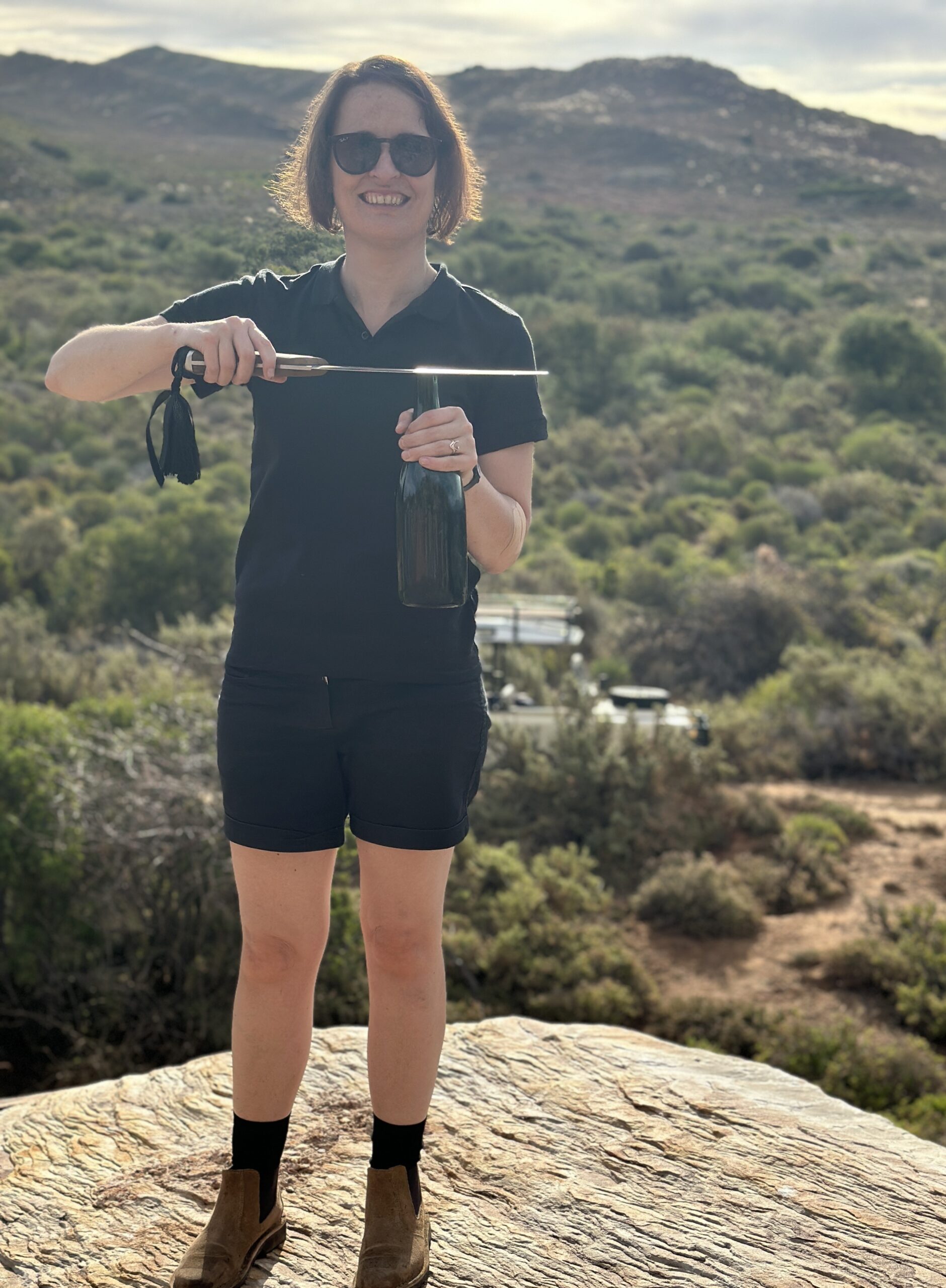news
A special place called Scherpenheuwel
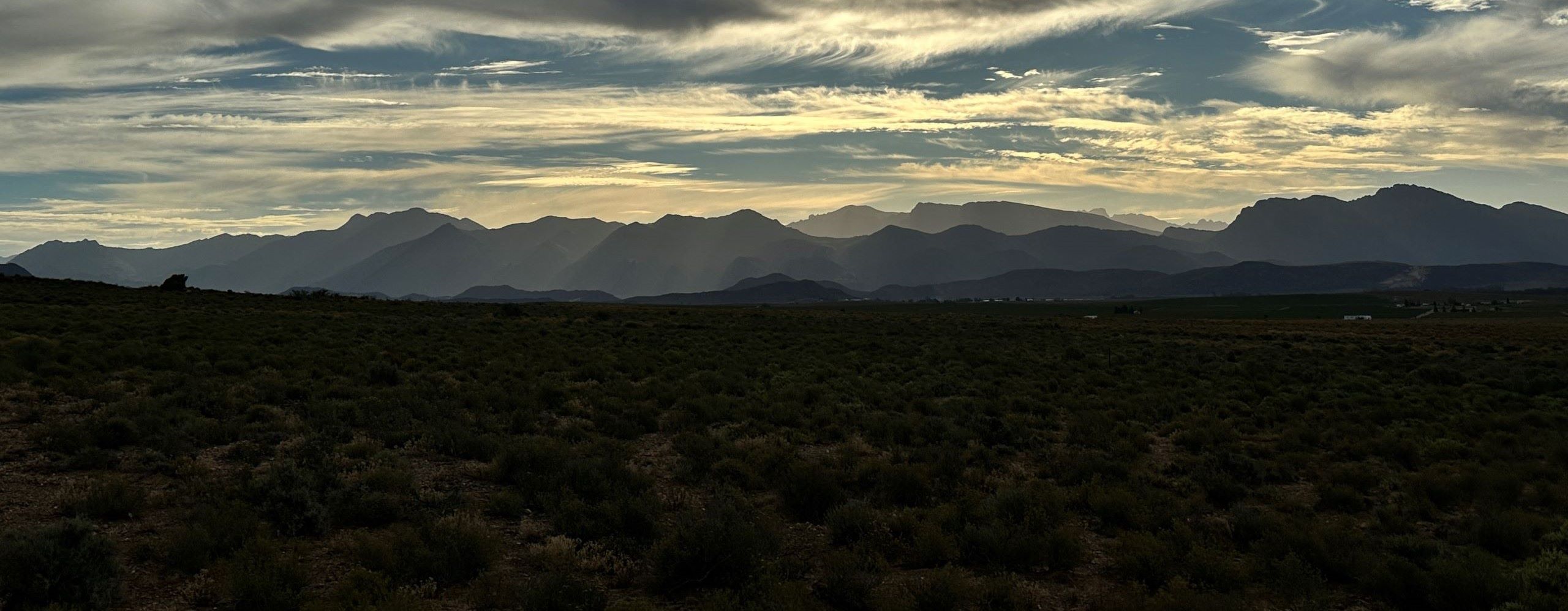
It is not often that we get the opportunity in our busy, daily routines to take a moment to just listen to the sound of silence. I recently found myself standing outside, in what felt like the middle of nowhere, struck by how deafening silence can be. It was powerful, yet peaceful. Surrounded by some of the most beautiful mountain ranges in every direction you look, with no buildings or human beings in sight; only a picturesque landscape and an overwhelming silence.
“We have two ears and one mouth; therefore, we should listen twice as much as we speak.”
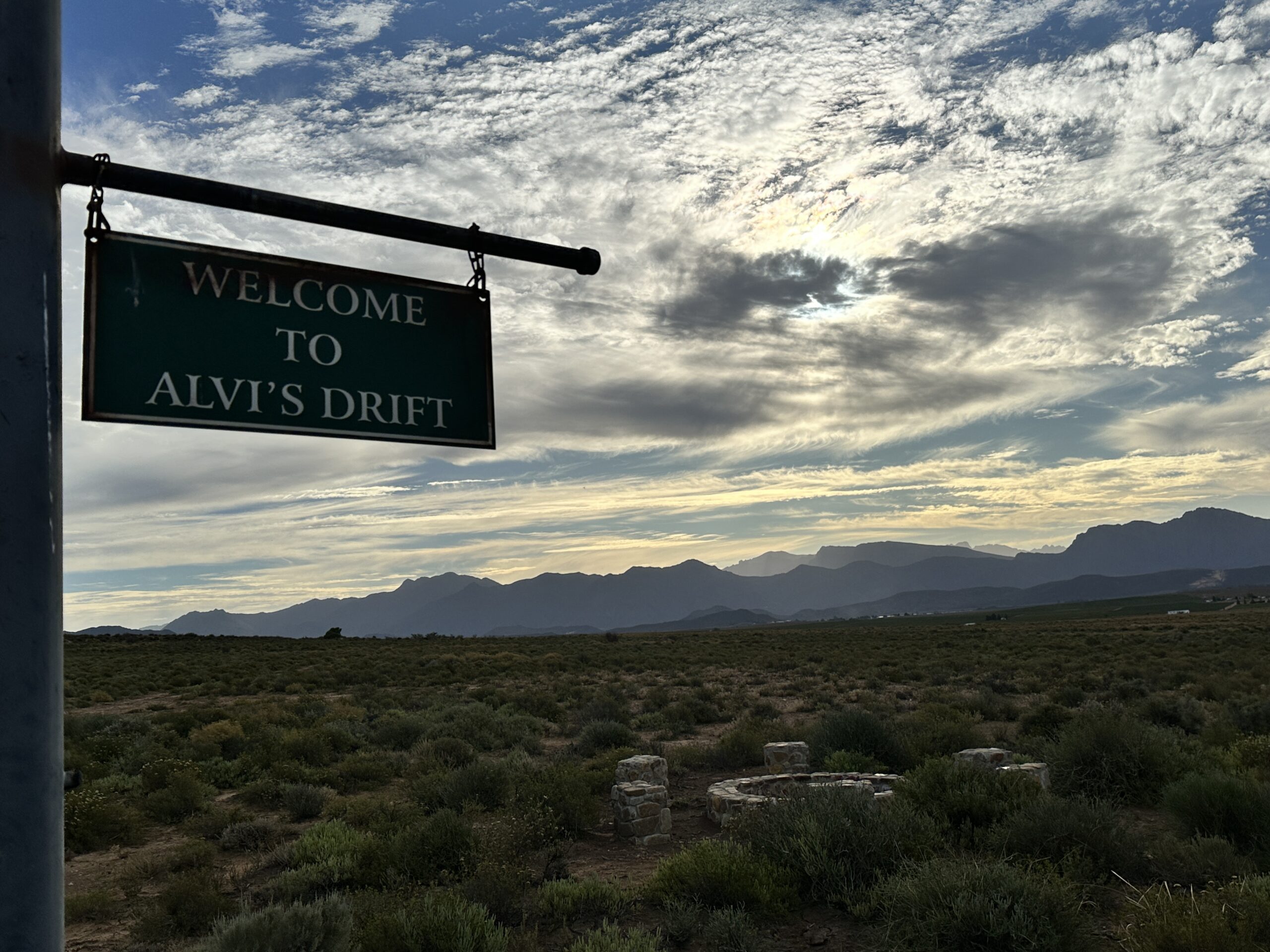

This was one of the memorable moments during my visit to Alvi’s Drift where I spent some time listening to stories about their rich family history, their passion for wine, about their vineyards and winemaking techniques and everything else that makes this place so special.
The story of Alvi’s Drift Winery dates back to the 1920s when founder Albertus Viljoen van der Merwe, affectionately known as ‘Oupa Alvi’, bought land in the Breede River Valley region and planted grapevines in these fertile soils. In 1930, ‘Oupa Alvi’ commissioned a low-water bridge across the Breede River for easier access to the farm. The locals soon named this bridge “Alvi’s Drift,” the name by which it is still known today. In 2005, the third-generation family member, also known as Alvi, named the winery after this landmark.
Listening to Alvi van der Merwe talk about his family history and how they got to where they are, what was clear is that it not only took a lot of hard work, dedication, and passion, but it also took bravery to take that very first step, which lead to what they have accomplished to date.
“Smile at the obstacle, for it is a bridge.”

This special place is in the Scherpenheuwel ward and it has a large soil diversity and enjoys a cooling night-time Atlantic Ocean breeze. This cooler pocket is an important factor as it helps the grapes ripen in a more balanced way – with the warmer daytime temperatures responsible for sugar development and that “ripe and luscious” character that Alvi wants, and the cool nights assisting to preserve the aromas and acidity in the grapes. Community upliftment is also an important factor for the team, as well as sustainable farming.
“We farm and make wine hand-in-hand with nature. As custodians of this land, we’re serious about protecting our natural heritage.” – Junel van der Merwe (Cape Wine Master, and Alvi’s wife)
Part of this land, a total of 7 000 hectares, they grow citrus, peaches, and apricots. You will also find many, many chickens, cattle, and a Game Reserve which is home to Eland, Springbok, Ostriches, and Gemsbok. It is quite an extensive property, indeed needing a whole family and community to run it all.
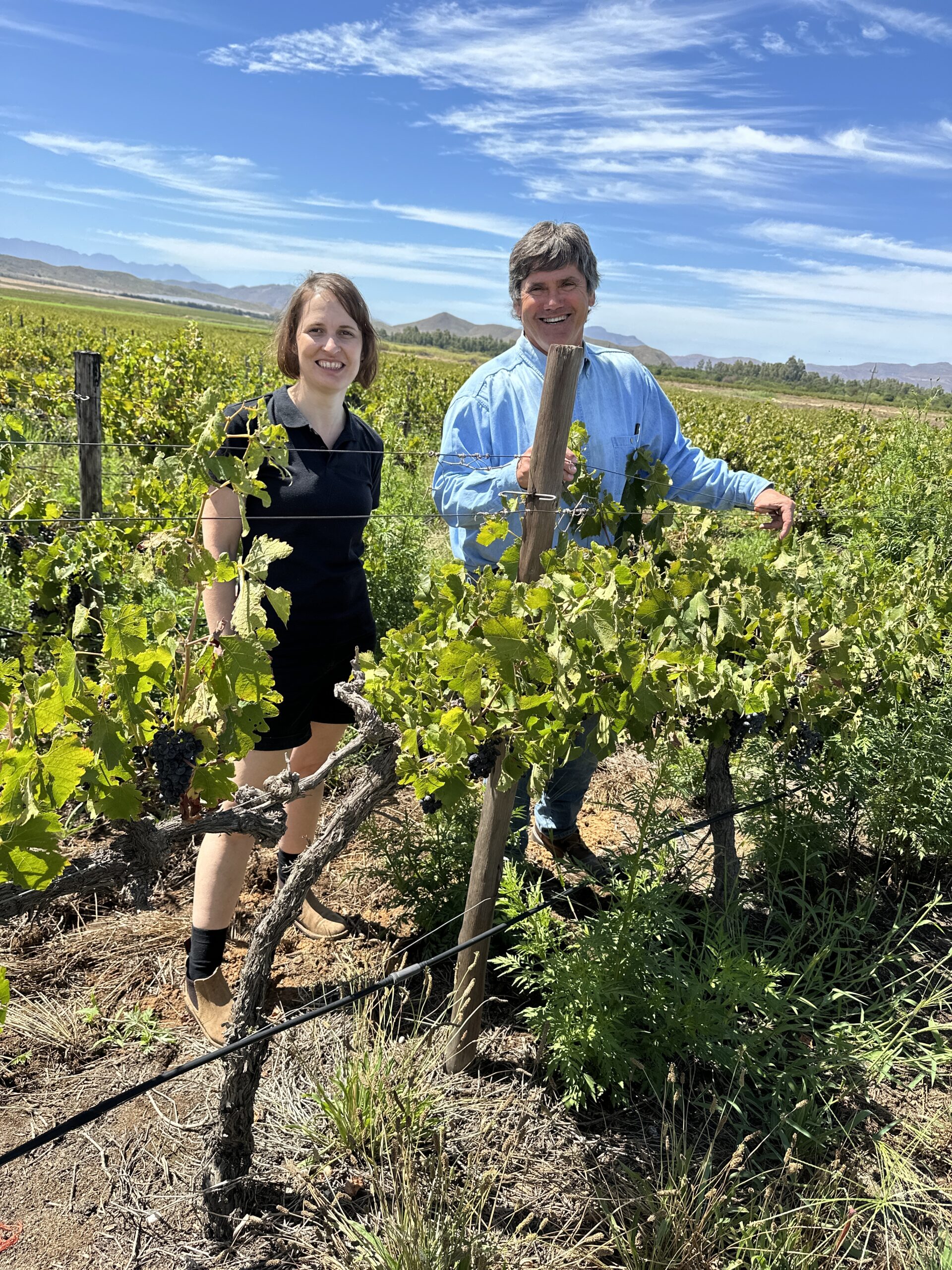
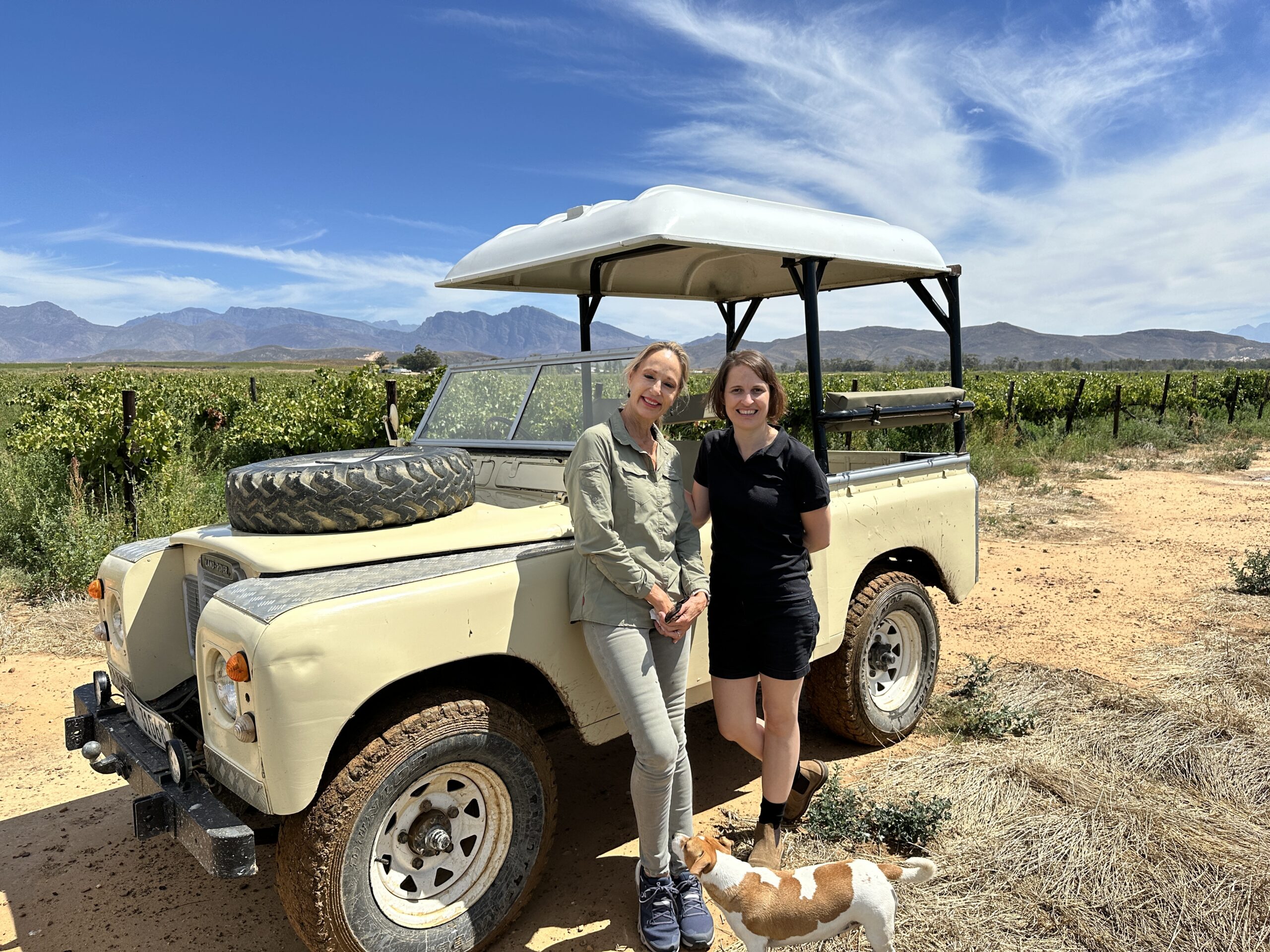
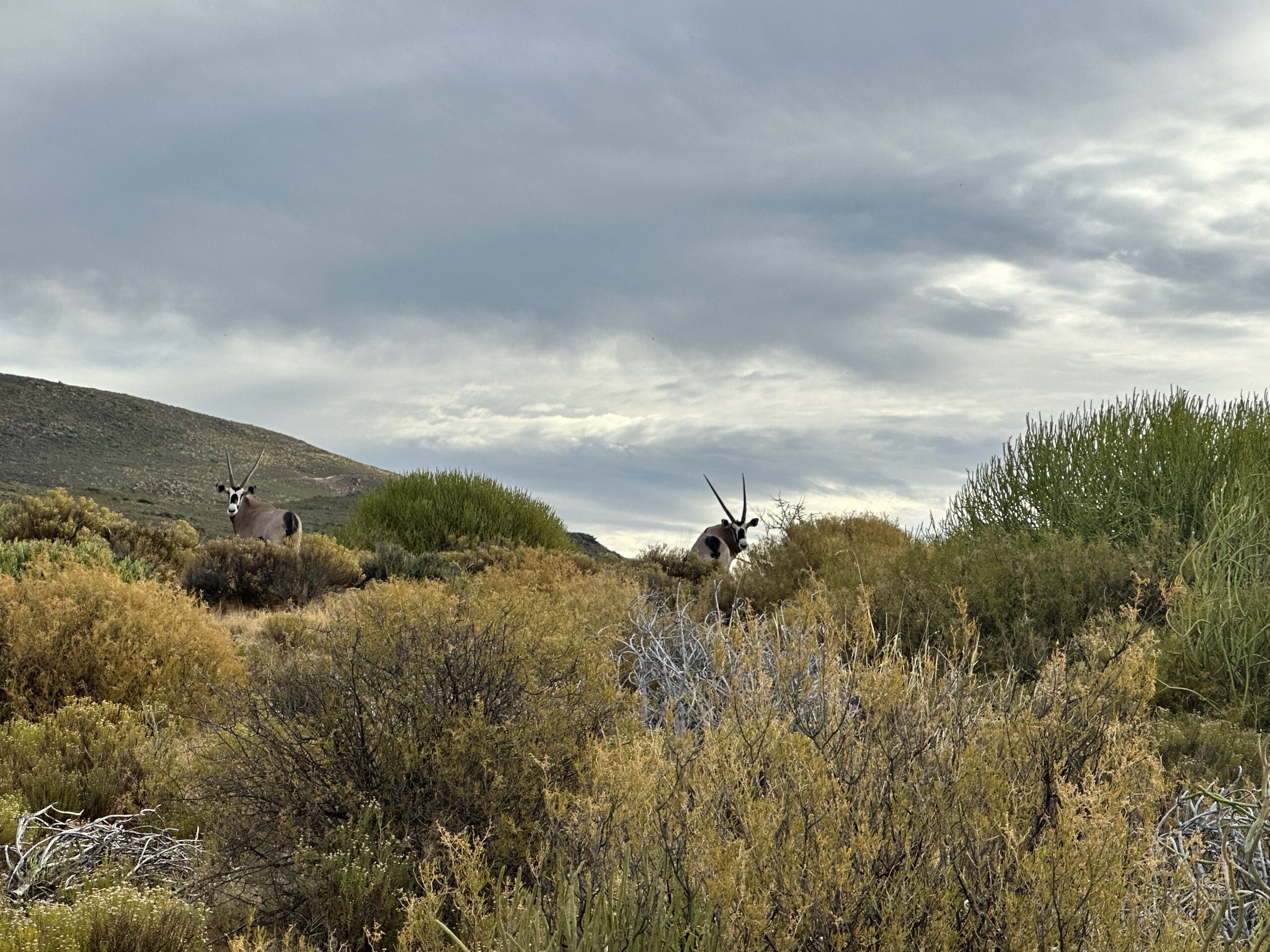

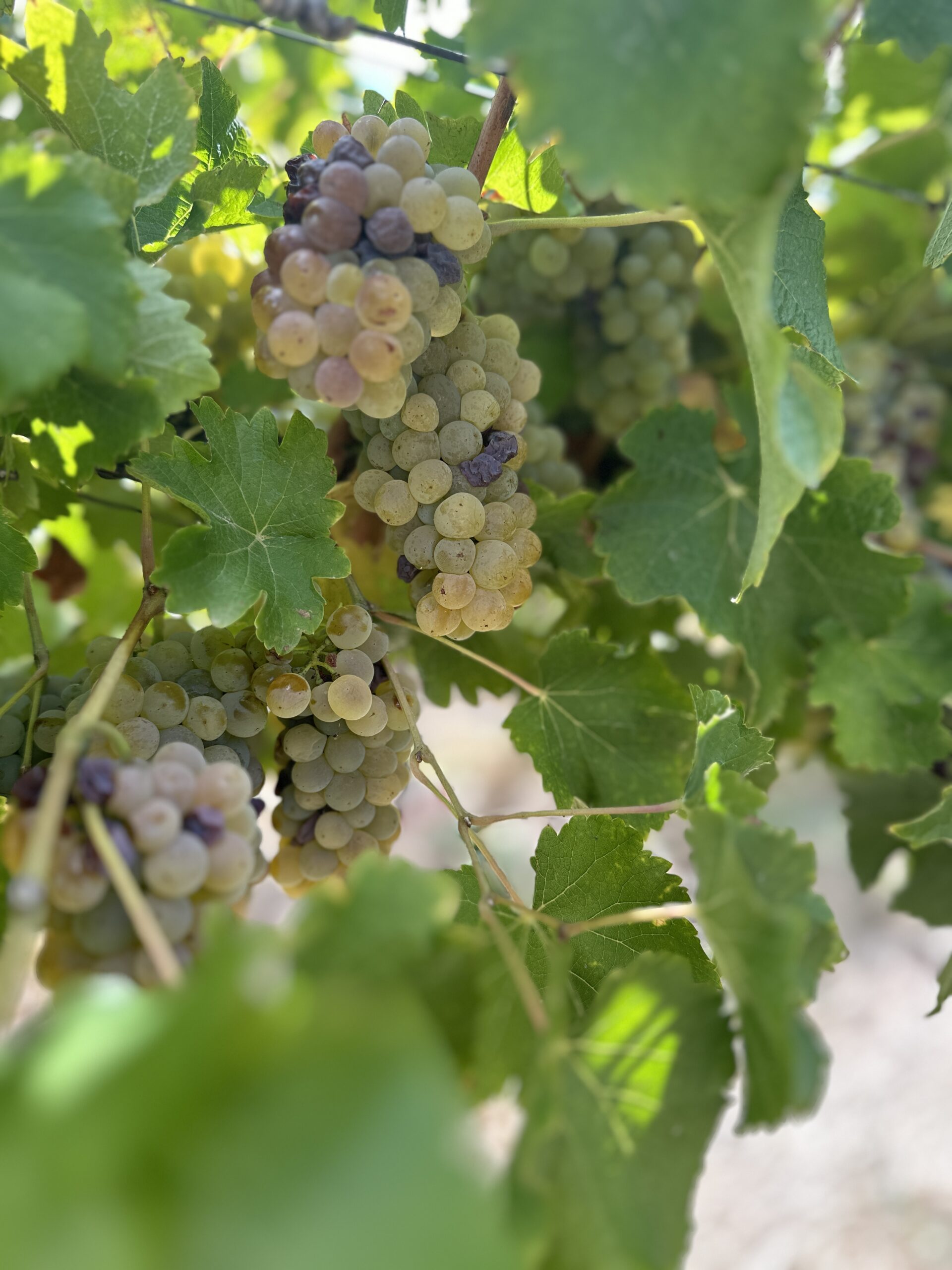
Then in the cellar, both modern and traditional techniques are applied. They use a combination of stainless-steel tanks of various sizes, wooden barrels and foudres and cement ‘kuipe.’ As Alvi and I walked through the cellar, tasting out of the different vessels, he was describing the different characteristics that can be expected as well as the techniques used to achieve each.
One that stood out was the use of muslin bags with the grape skins inside being lowered into the tanks for contact with the juice. The purpose of this is to increase the mouthfeel of the wine. This is only done on some of the wines and only for as long as it is beneficial to the juice.
There are a few examples of this technique being applied elsewhere and studies have reported that it does intensify the mouthfeel, more tannin extraction, as well as produces wines that have a brighter fruit flavour. Listening to Alvi in the cellar, he is certainly always looking to improve where they can and keeping quality top of mind.
“Challenging a few treasured, long-held winemaking beliefs in the process”
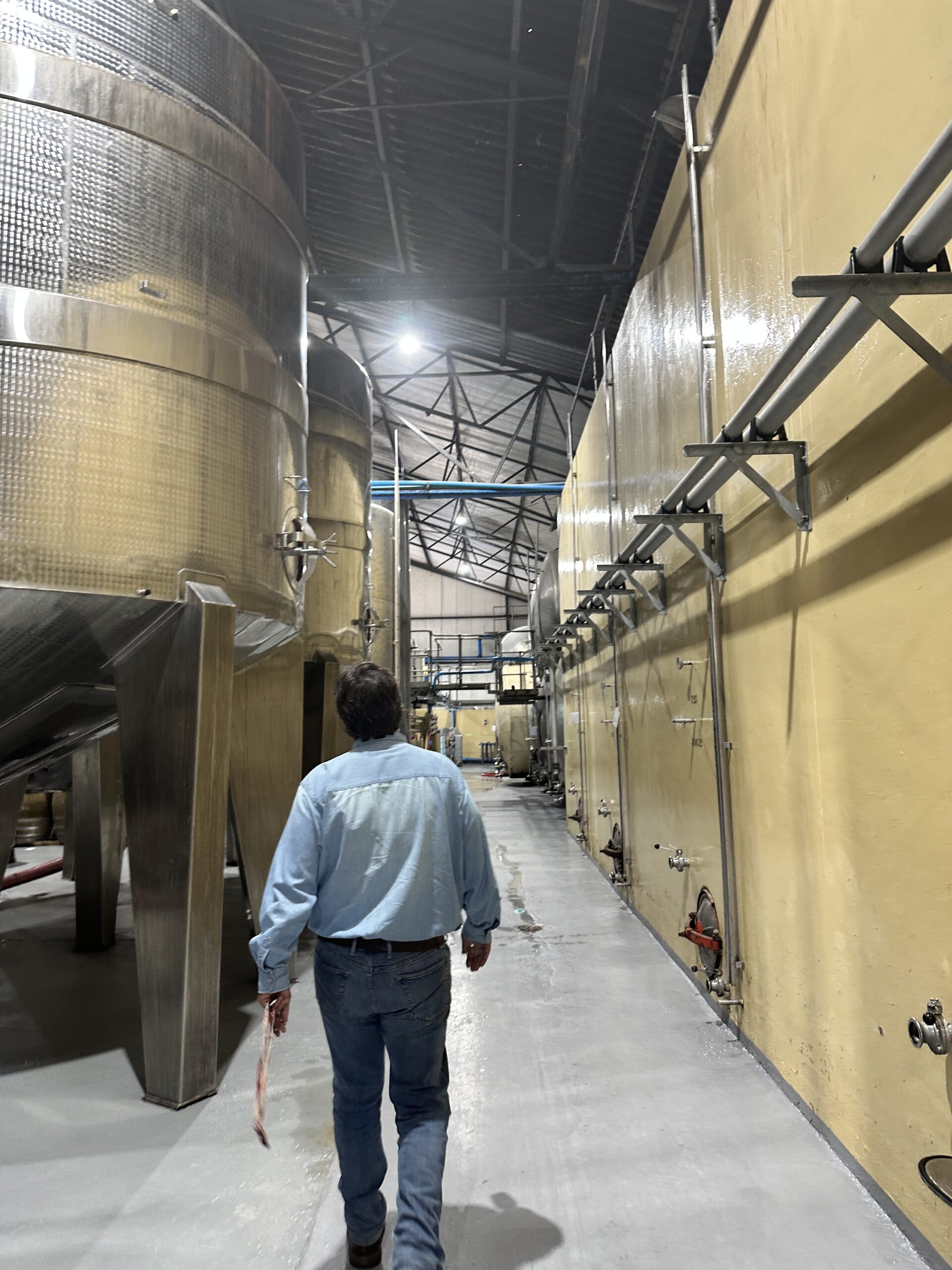
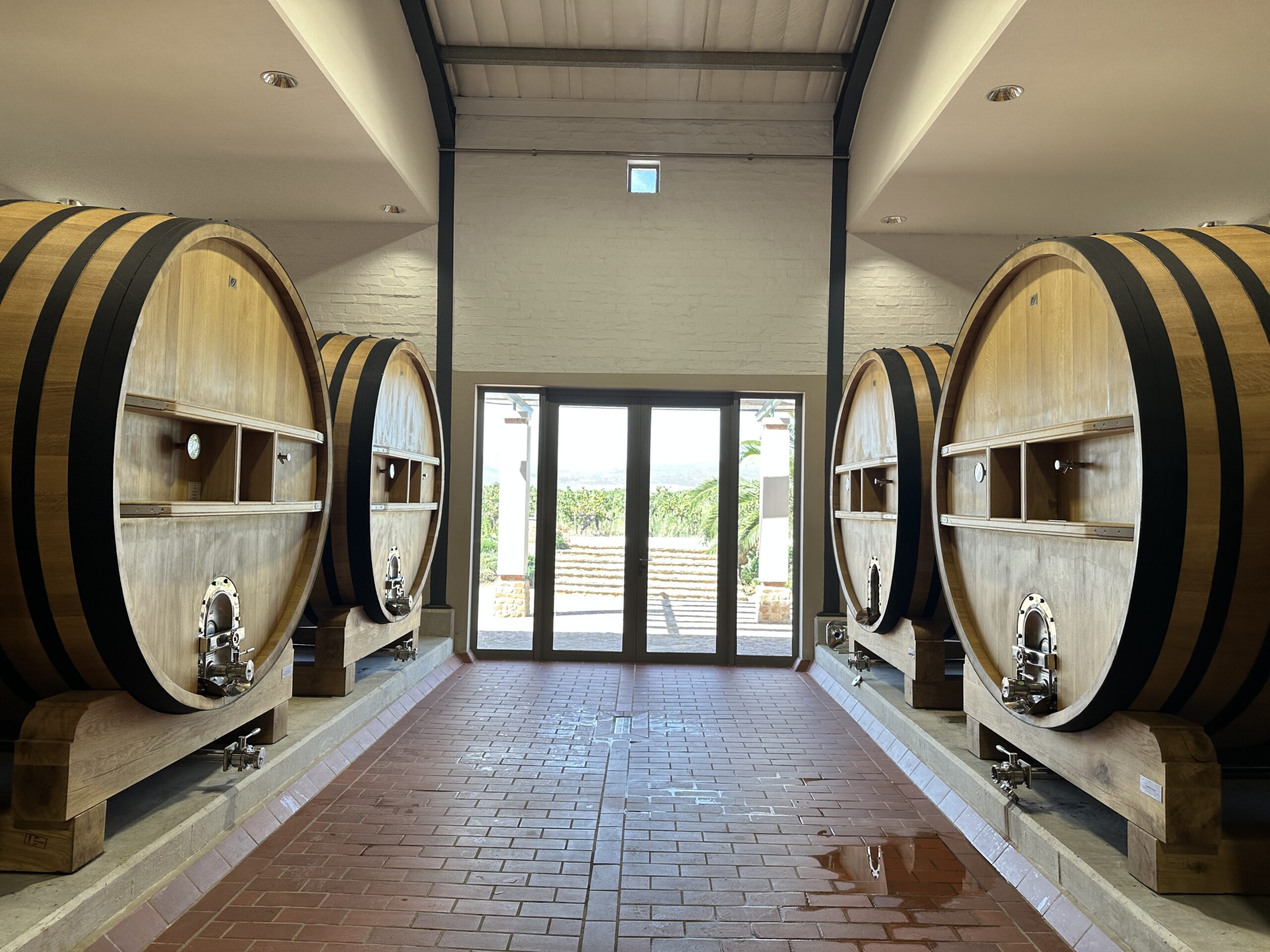
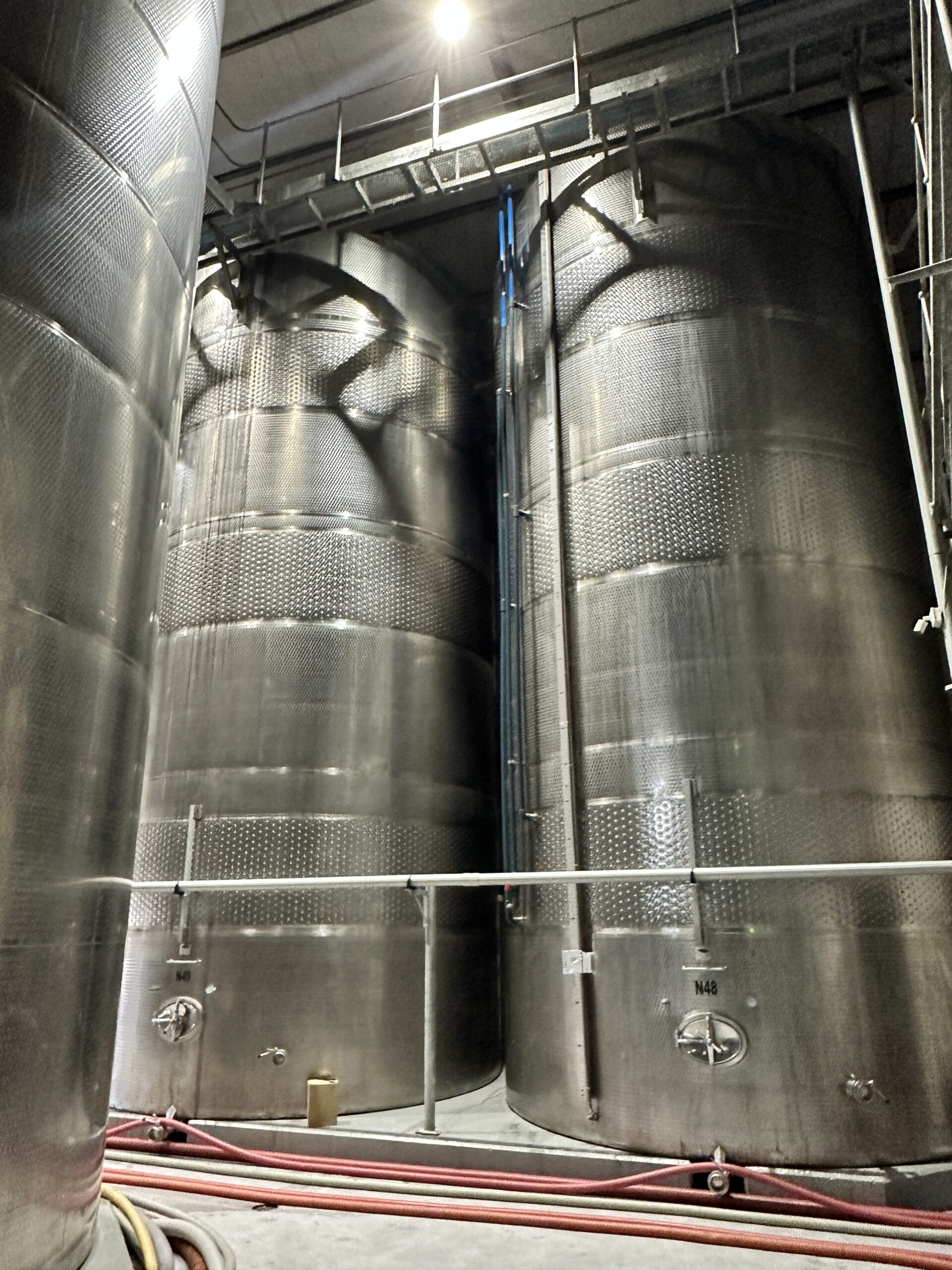
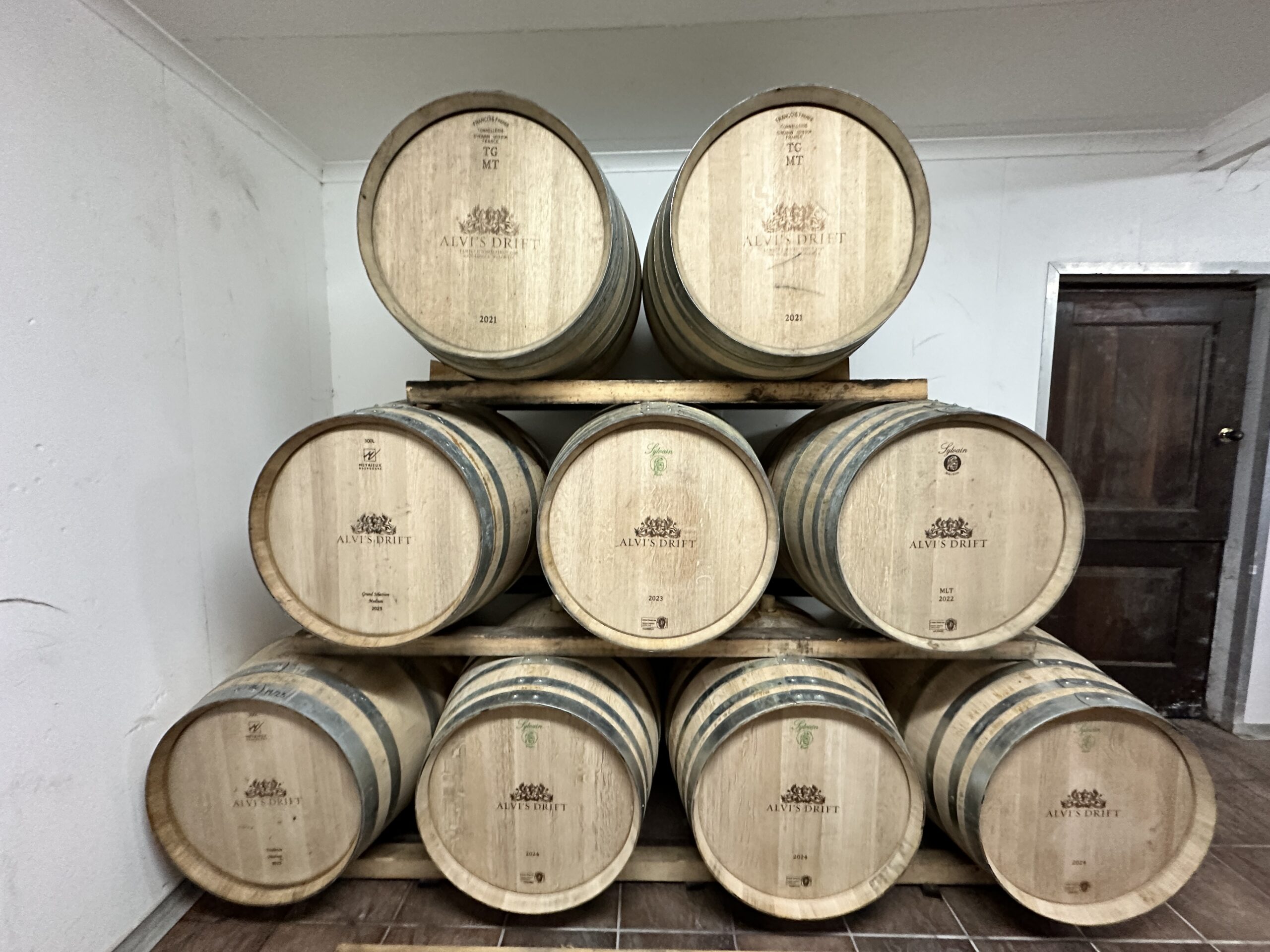
We not only tasted the grapes still hanging in the vineyards and the juice in the tanks in the cellar, we also worked our way through the current vintages of the 5 wine tiers that they produce, as well as enjoyed a treat of some older vintages that impressed. In each wine tier there was a wine that stood out. The Signature Range is described by Alvi as “think ‘great’ for the price of ‘good’ and I could not agree more. Specifically, the Chenin Blanc, which overdelivered on the quality compared to the price point.
The 221 range involves a Springbok, but not the kind that you will find in the Game Reserve. The name is in honour of ‘Oupa Alvi,’ who gained the reputation of scoring the first try for the Springboks rugby team on African soil against New Zealand’s All Blacks team. His Springbok rugby jersey back in 1930 was number 221. This range can be described with the word ‘balance,’ also offering great food and wine pairing opportunities.
Then the Albertus Viljoen Chenin Blanc stood out for its complexity, as well as its ageability, as was proven by the delicious 2015 vintage enjoyed. And of course, last, but not least, the award-winning Reserve Muscat Nectarinia in all its glory, showing layers of flavours with a long and satisfying finish.
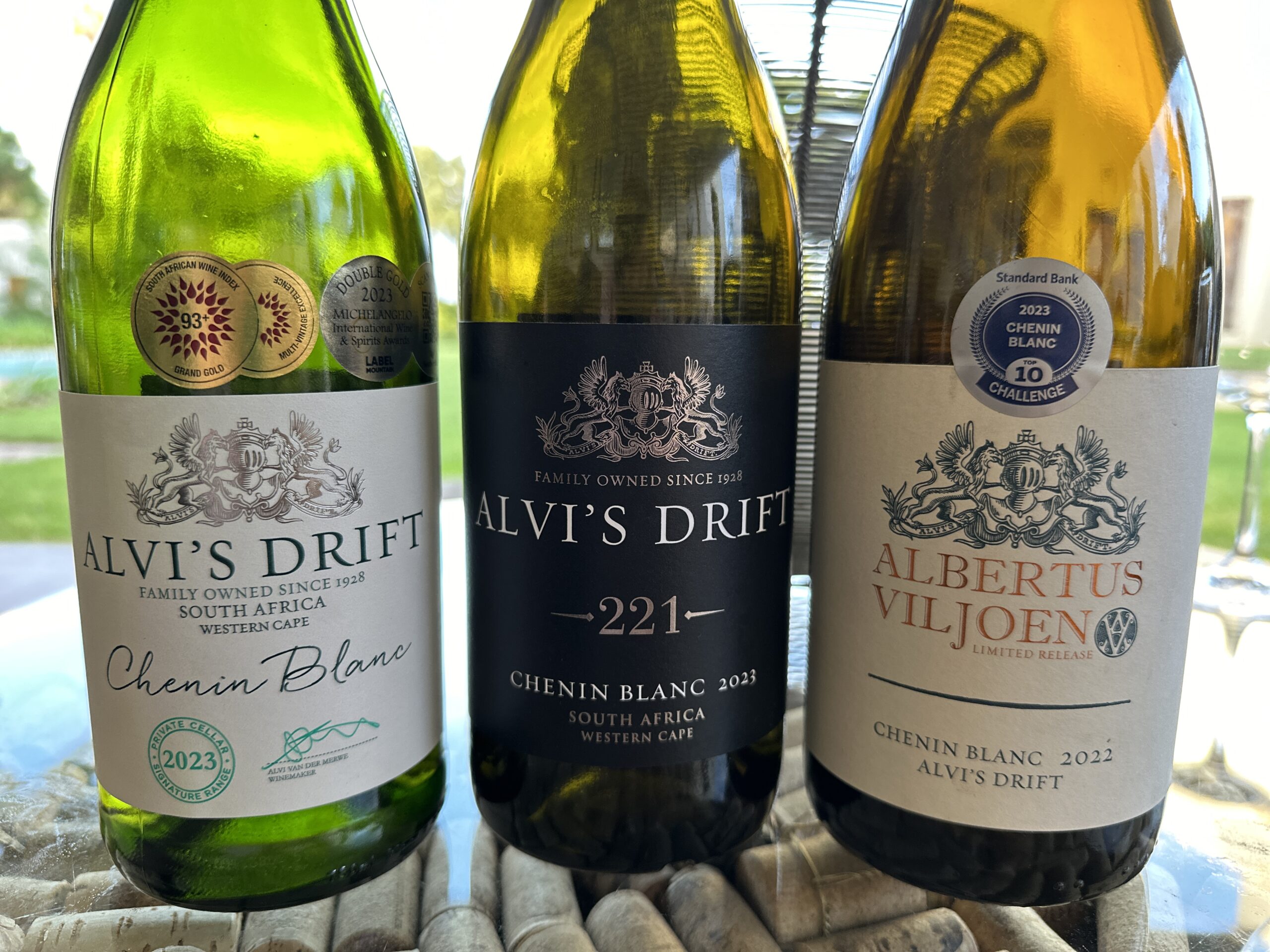
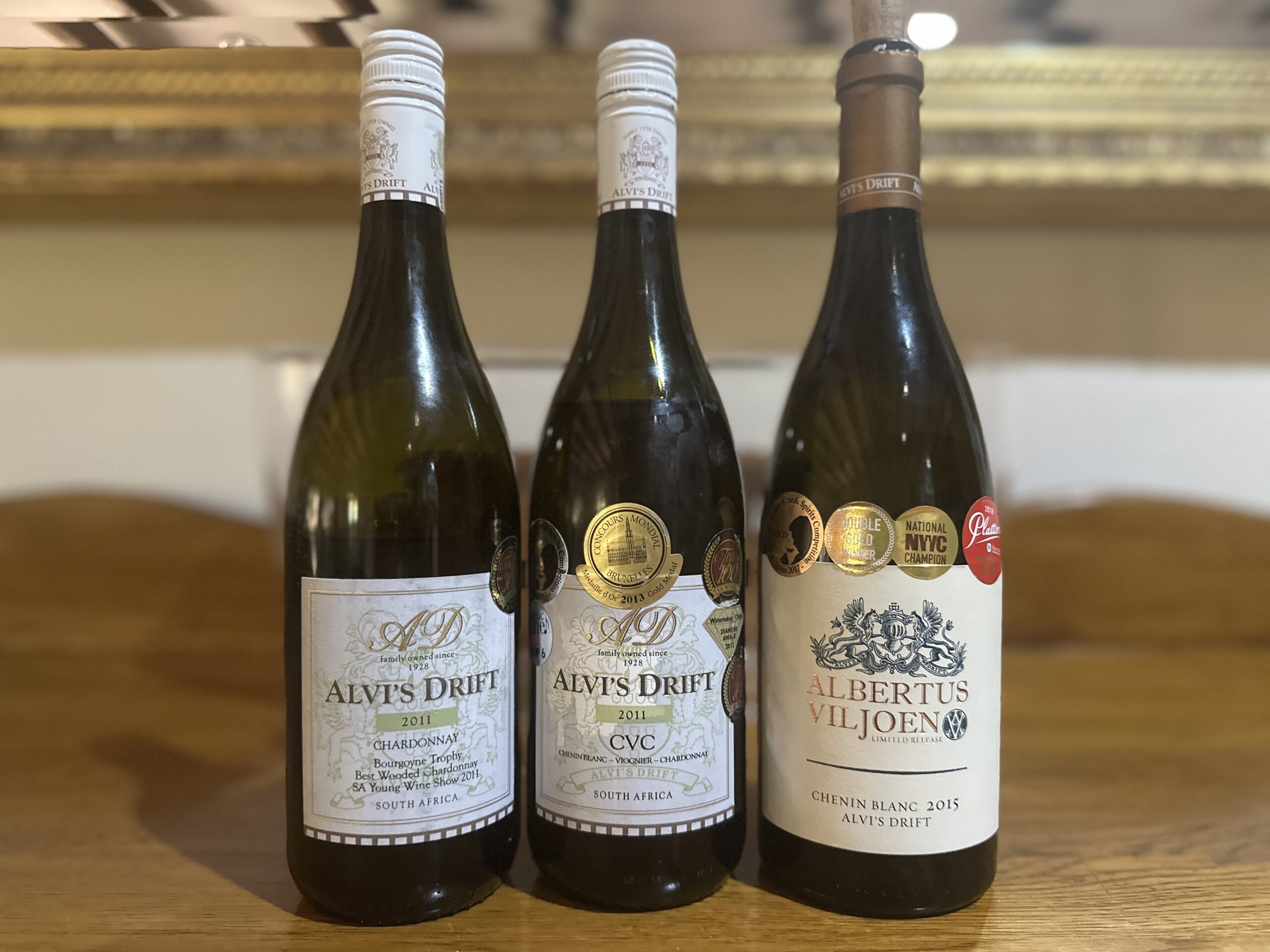
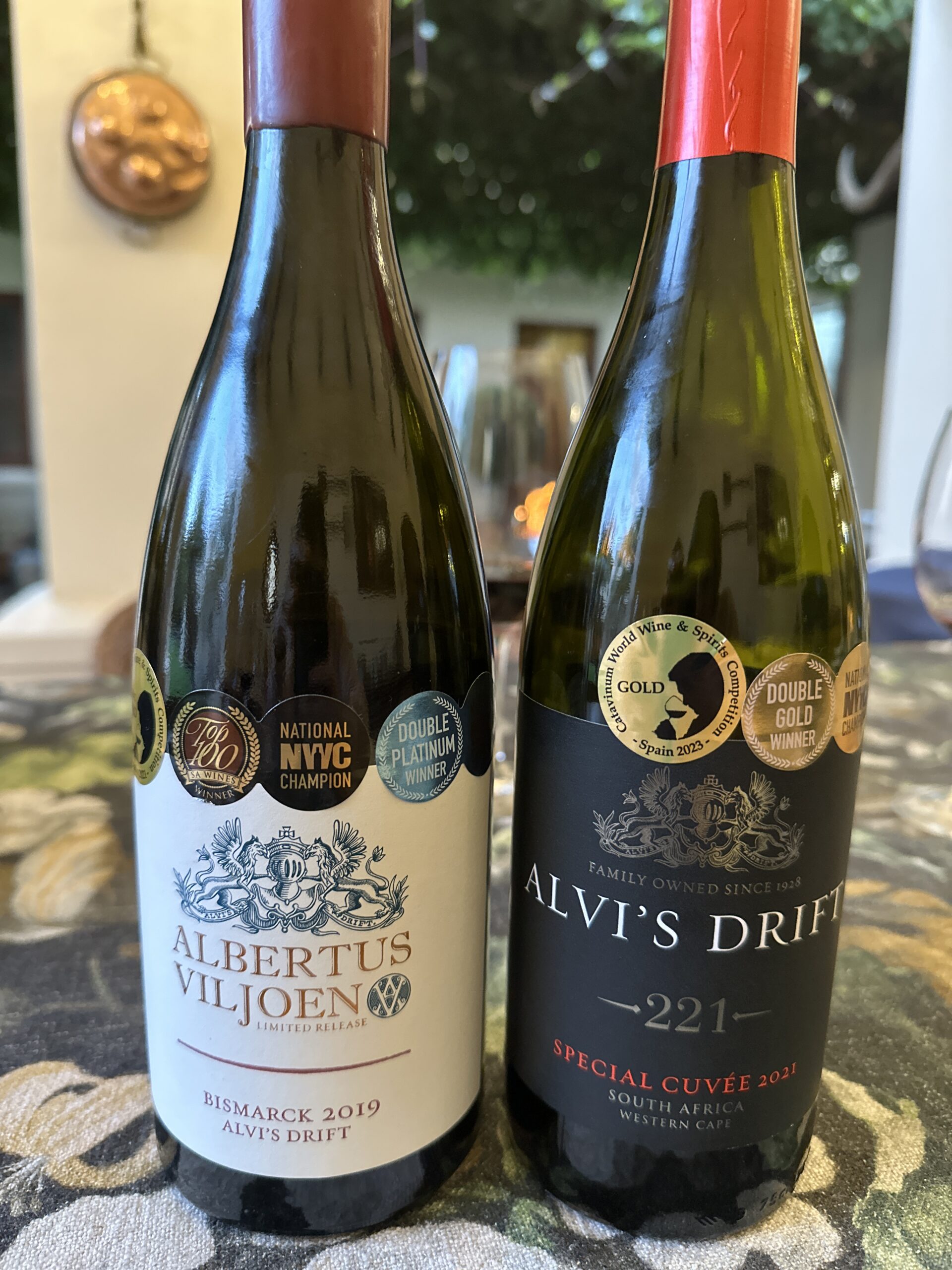
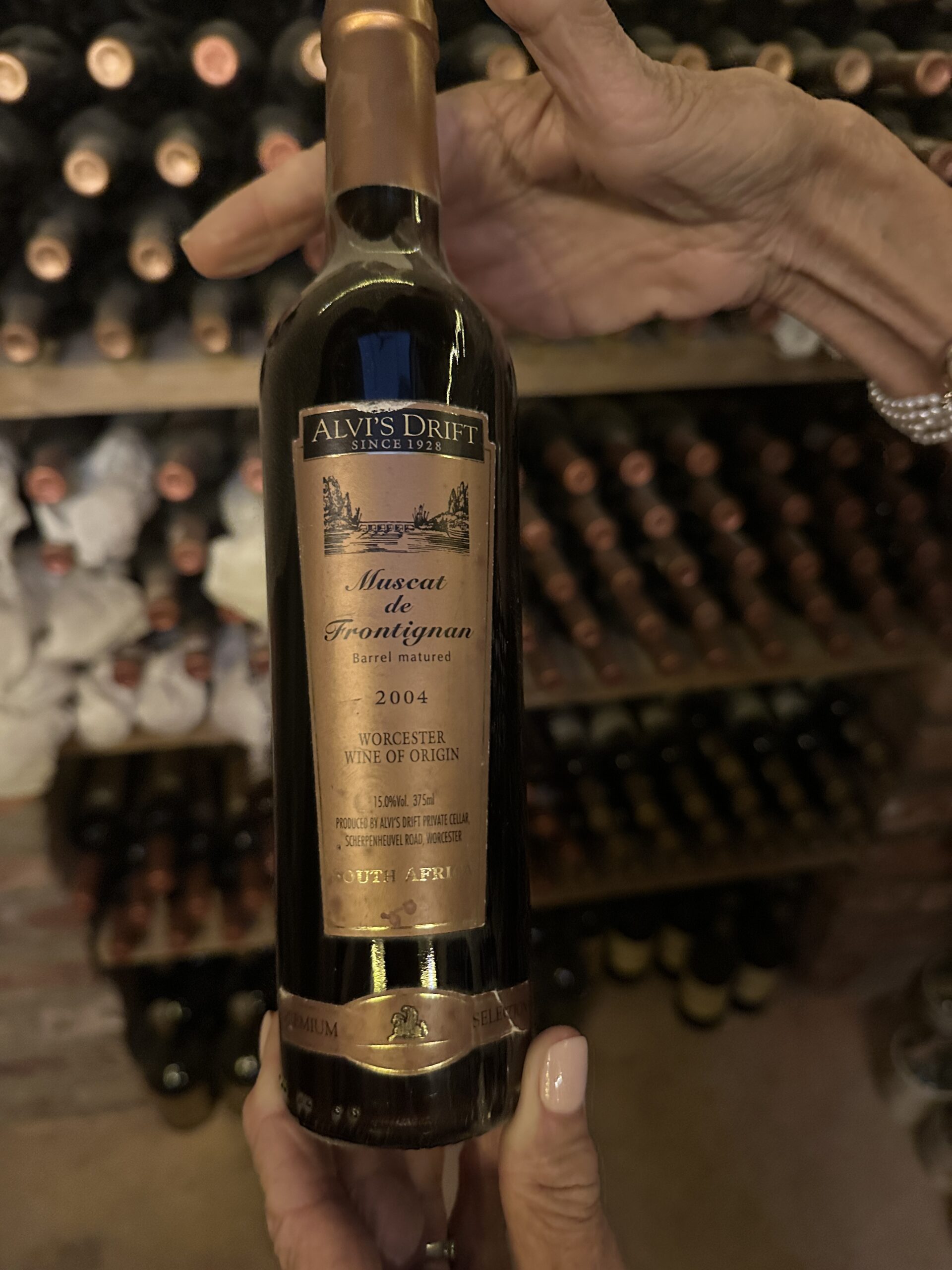

This was a wonderful adventure and it was a joy to listen, not only to the noticeable silence, but also the stories, technical information, and future plans of the most generous hosts.
- René, Restaurant Mosaic Sommelier
